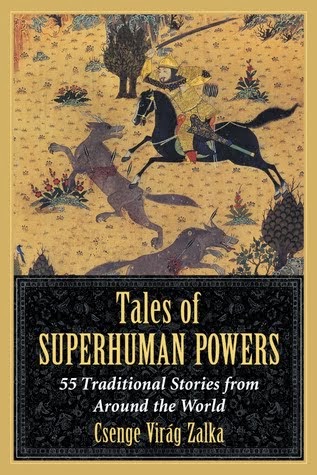This year, my A to Z Blogging Challenge theme is Romance Tropes in Folklore! For each letter, I will pick a popular trope from romcom movies and romance novels, and see if I can find the same trope in folktales and legends. Because it's fun. Here we go.
THE TROPE
This is a fun one: it's a trope about a person who thinks they are in a love triangle, only to find out that the two love interests were one and the same person all along.
THE FOLKLORE
As surprising as it is, this one exists in folklore. Mostly because there are so many cases of concealed identites.
THE STORIES
Lady Béla (Hungarian folktale)
This one is about a girl who is raised by her father pretending to be a set of twins: a feisty and strong warrior woman, and a kind and gentle maiden. In her kind form, she falls in love with a shepherd. When her castle is attacked, he joines the guard, and she tries to seduce him in her warrior-woman persona, but he stays loyal to his beloved. In the end, it is revealed she is both.
Procris and Cephalus (Greek myth)
This one is a pretty complex tit-for-tat fake adultery story. The goddess Eos wants to seduce the hunter Cephalus, but he wants to stay faithful to his wife Procris. Eos wants to prove Procris is not worth the trouble, and changes Cephalus' appearance so he can try to seduce his own wife. He succeeds (with a large sum of money) so he exiles Procris in disgust. After some adventures, Procris returns in the guise of a young hunter, and in that form, she seduces her husband (again, for a valuable gift). When they get down to business, she reveals herself, calling her husband out on his hypocrisy. They do make up, but in the end, Cephalus tragically and accidentally kills her.
The tailor's daughter (Folktale from Iraq)
A tailor's clever daughter outwits a sultan, so he decides to marry her, and then promptly forgets about her. When he goes on journeys abroad, she always sneaks after him in disguise, and seduces him three different times, giving birth to three children. When the sultan decides to marry someone else, she sows up at the wedding with the children, and the reveals that she had managed to seduce her own husband three times as three different people.
(This story type exists in many places - I have seen versions from Azerbaijan, from Israel, and also from Sicily, the latter a very intriguing variant from this book where the heroine, Catarina the Wise, escapes jail three times to seduce her husband.) (Sadly, I don't much love this tale type, because the husband is always a jerk.)
Do you have favorite romance stories that feature this trope?
Do you like the folktale versions?
Don't forget to leave a link in the comments so I can visit you back!













